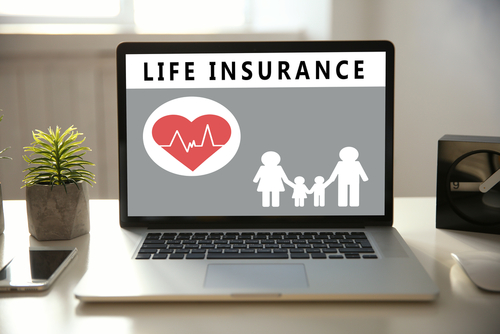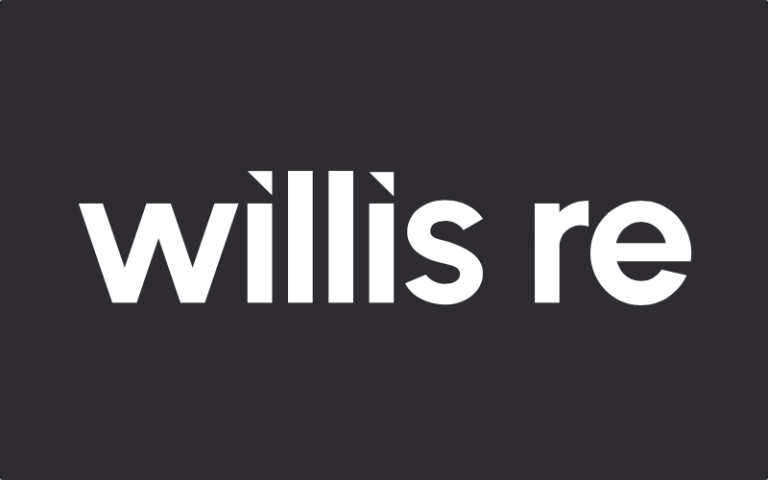
There’s been a noticeable trend in favor of term life insurance in recent years.The popularity of term life insurance is that it’s much less expensive than permanent life insurance.That lower cost does come at a price—all term policies come to an end at some point.
A longer-term term policy can extend up to 30 years, but if you take such a policy at age 30, it will expire by the time you’re 60.And though it may provide for renewal, the premium will be based on your age at that time.Rest assured the premium you pay at 60 will be substantially higher than what you pay at 30.
As popular as term life insurance is, permanent life insurance is a more appropriate choice for some people in certain circumstances.To know if that describes you, you’ll need to know a good bit about permanent life insurance, including and especially the benefits it offers.Table of Contents What is Permanent Life Insurance? Permanent vs Term Permanent Cash Value Component How It Works Types of Permanent Life Insurance Cost Pros and Cons Alternatives to Permanent Life Insurance Just as the name implies, permanent life insurance is a policy with no expiration date.
You’ll take a policy at a certain point in life, and you’ll be covered until death.Once a permanent life insurance policy is in place, it can’t be canceled by the insurance company except for nonpayment of premium.Permanent life insurance has two other characteristics that distinguish it from term.
Fixed Premium Rate The first is a fixed premium rate.Unlike term insurance, in which the premium will change upon renewal based on your age at that time, permanent life insurance has a single annual premium you’ll pay for the life of the policy.Cash Value The second characteristic is cash value.
Term life insurance is often referred to as pure life insurance because it provides a single benefit—the life insurance death benefit.Permanent life insurance provides a death benefit as well, but also has a cash value accumulation feature.In that way, permanent life insurance serves a dual purpose—life insurance plus investment value.
Part of your premium is allocated for the cash value, which also earns interest as it accumulates.If a permanent life insurance policy is issued by a mutual insurance company, you’ll earn dividends on your policy.That’s because, with a mutual insurance company, you’re effectively a shareholder in the company and entitled to a share of the profits.
Age Limit One factor to be aware of with permanent life insurance—though this will not apply to most people—is that many policies do have an age limit.Once you reach that age, the policy will terminate.For example, a policy may have a termination date of 95 or 100.
Not many people live that long, but if you do, you may find yourself without coverage.This is a provision that will be buried in the fine print of the policy, and you need to be aware of it.The cash value of permanent life insurance doesn’t just sit in the policy and collect interest forever.
Instead, it provides certain benefits to you as the policyholder.For example, if you need to access the funds in the policy, you can take a loan against the cash value.You’ll pay a small interest rate on the loan, which basically will be paying interest to yourself.
And, not only will you not need to make monthly repayments, but you won’t even need to have a credit check to qualify.Another alternative is to use the cash value to pay the premiums on the policy.Some permanent life insurance policies allow you to do this once the policy reaches a certain age and cash value balance.
For example, let’s say you’re 65 years old and you had a permanent life insurance policy for the past 35 years.There may be sufficient cash value in the policy to make the premium payments for the rest of your life.That means you’ll maintain the death benefit without having the cost of the premium each year.
You’ll need to be careful with the second option, however.If the cash value in your policy is exhausted, no premium payments will be made.That will cause your policy to lapse at what could be the worst time in your life.
But, your insurance representative should be able to provide you with a projection of how long the cash value will cover your premiums.Finally, if you terminate your policy and it has accumulated a substantial cash value, the insurance company will typically pay you the cash value upon termination.That means the policy will serve as an asset accumulation program, in addition to life insurance.
Life Insurance Cash Value Caveat! There is one negative side of the cash value.When you die, your beneficiaries will receive only the death benefit listed in the policy.The cash value will be forfeited to the life insurance company.
The standard advice is good on this front: use it or lose it! You’ll need to do that while you are still alive.Just as there are many different types of life insurance overall, there are also different types of permanent life insurance, which we’ll discuss in the next section.But the basics of permanent life insurance are roughly the same from one policy type to another.
You’ll apply for a policy at a specific point in your life.If you are approved for the policy, you’ll be assigned a premium that will remain constant for the rest of your life.There is a two-year period of contestability, during which the insurance company can refuse to pay the death benefit if you die because of a pre-existing condition that you did not disclose on your application.
And technically, the policy will not pay the death benefit for suicide within that timeframe.(This is presumably to prevent people from taking a life insurance policy and committing suicide to provide a financial benefit for their loved ones.) But, once you clear the period of contestability, your policy cannot be canceled, except as noted above for nonpayment of premiums.Even if you develop a severe health condition subsequent to approval, the policy will remain in force.
One of the major advantages of permanent life insurance is the receipt of benefits and even its cash value generally does not create a tax liability.Because premiums paid for life insurance are not tax-deductible, the death benefits paid are not taxable.(There is, however, an exception if you deduct life insurance premiums for business purposes—in that case, the death benefit may be taxable).
There is also generally no tax liability on the interest earned on the cash value in your permanent life insurance policy.That cash value will grow on a tax-deferred basis, very similar to an IRA.A tax liability will only apply if the interest and dividends received on the policy exceed the amount of money you’ve paid in premiums up to that point.
Like term life insurance, there are many types of permanent life insurance.Below is a summary of the primary policy types: Whole Life Insurance Whole life is the most common form of permanent life insurance, and generally the simplest.It includes all the features and benefits discussed above.
Universal Life Insurance Universal life is similar to whole life, except with a greater emphasis on investing.The policy comes with a premium range (minimum and maximum), and you can pay any amount within that range.Growth in the cash value is tied to the performance of underlying financial markets, but there’s typically a guaranteed minimum annual return.
Variable Life Insurance Variable life, as the name implies, includes variable features.For example, you can choose level premiums, or they can be adjusted based on the policy.You can also choose how and where to invest the cash value.
This is usually done through insurance subaccounts, which are non-publicly traded funds that are similar to mutual funds.Though these policies do have the potential to provide higher returns than whole life or universal life, they also do have a risk of loss of your cash value.Permanent Life Insurance Hybrids These include indexed universal life insurance (IUL) and variable universal life insurance (VUL).
IUL also has minimum and maximum premium ranges, within which you can vary your payments.It’s also an investment-based policy, driven by underlying indexes, like the S&P 500.However, insurance companies impose minimum and maximum return levels, which will prevent you from getting the full benefit of the investment performance of the funds, but will also protect you from downside loss.
VULs works similar to IULs, except they don’t include minimum and maximum investment returns.That means you can either get the full benefit of higher returns, unlike on other cash value policies, or sustain losses.From a consumer standpoint, one of the obstacles to permanent life insurance is cost.
For example, a typical whole life policy will have a premium 10 times or more the cost of an equivalent amount of term life insurance.That’s because permanent life insurance includes both higher fees and the allocation toward cash value.The other variations of permanent life insurance (universal life, variable life, IUL and VUL) will have premiums that are either higher or lower than an equivalent amount of whole life insurance, depending on the specific provisions within the policy.
Getting quotes for permanent life insurance is a more complicated process than it is with term life insurance, which is why so many online insurance sites promote term insurance.This is largely because permanent life insurance policies are more complicated internal policies, and contain many more variables.Pros: Permanent life insurance is just that, permanent.
Once you take a policy, you’ll have it for the rest of your life and it can’t be canceled except for nonpayment of premiums.Permanent life insurance typically has a cash value, which adds an investment benefit to the policy.You can take a loan against the cash value in the policy, or even receive the cash value from the insurance company upon termination of the policy.
Your premium will remain fixed for the rest of your life.Though it may be high early in life compared to term life insurance, it will be less expensive than term insurance that’s renewed at a later age.The cash value of a policy, including interest and dividends, will generally not be subject to income tax.
Cons: Permanent life insurance premiums are about 10 times or more higher than an equivalent amount of term life insurance.Because of inflation, the permanent life insurance death benefit you took at age 30 may not be sufficient by age 50.You may need to supplement that with a term life insurance rider.
The cash value in your policy can be taxable if it exceeds the total amount you paid in premiums over the life of the policy.When you die, your beneficiaries will get only the death benefit—the cash value will revert to the insurance company.Though many permanent life insurance policies are set up to be primarily investment vehicles, the return is typically not as good as you could get in a dedicated investment account.
Many policies do have a termination date at age 95 or later.The primary alternative to permanent life insurance is term life insurance.And the primary benefit of term life insurance is that it costs a fraction of the premium amount of an equivalent amount of permanent life insurance.
That not only means it’s less expensive on an annual basis, but also that you can purchase more of it.For example, you can purchase $500,000 in term life insurance for about half the cost of a $100,000 permanent life insurance policy.With today’s cost structure, the higher amount of coverage offered by term life insurance is more relevant to the average person’s financial situation.
This is especially true if you have dependents, like young children, or large financial obligations, like a mortgage, student loans, or business debt.But.be aware that term policies do end, and though you’re typically able to renew your coverage, it will be at a higher premium cost based on your age at the time of renewal.
The other disadvantage of term life insurance is that it doesn’t come with a cash value.However, given that the investment returns on permanent life insurance are subpar, you can generally do better buying a term life insurance policy and investing your money through mutual funds or exchange traded funds held in a dedicated investment brokerage account.Permanent life insurance will work best if you’re looking to lock in your premium for the rest of your life.
Term may be cheaper in the short run, but once the term expires, you’ll pay a lot more for the coverage.Apart from costs, there is another advantage to permanent life insurance that term can’t offer.Since the policy can’t be terminated once in force, your coverage will remain intact even if you develop a serious health condition.
It’s an excellent choice for anyone who has a family history of chronic or terminal illnesses, and is concerned about insurance renewability later in life.For most people, term life insurance is certainly the better choice.But if the above situations described you, you may want to take a close look at permanent life insurance.
*While we make every effort to keep our site updated, please be aware that "timely" information on this page, such as quote estimates, or pertinent details about companies, may only be accurate as of its last edit day.Huntley Wealth & Insurance Services and its representatives do not give legal or tax advice.Please consult your own legal or tax adviser.
Publisher: Insurance Blog by Chris








